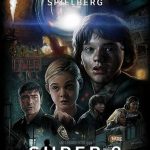The Beatles – I Am The Walrus

I Am The Walrus,” a standout track from The Beatles’ 1967 album “Magical Mystery Tour,” is one of the band’s most enigmatic and experimental songs. Written by John Lennon, the song is renowned for its surreal lyrics, complex arrangement, and innovative studio techniques. “I Am The Walrus” captures the spirit of the late 1960s, blending psychedelia with avant-garde elements to create a track that is as intriguing as it is iconic.
The genesis of “I Am The Walrus” reflects Lennon’s penchant for mixing absurdity with profundity. Inspired by Lewis Carroll’s poem “The Walrus and the Carpenter” from “Through the Looking-Glass,” Lennon’s lyrics are a stream-of-consciousness blend of nonsensical imagery and cryptic references. The song’s opening lines, “I am he as you are he as you are me / And we are all together,” set the stage for a journey through a lyrical landscape that defies conventional interpretation.
Lennon’s motivation for writing such a bizarre song was partly to confuse those who overanalyzed The Beatles’ lyrics. He found it amusing that people would look for hidden meanings in his work, so he intentionally included lines that were meaningless. This playful defiance against the expectations of critics and fans alike is a core aspect of the song’s charm.

Musically, “I Am The Walrus” is a complex tapestry of sounds and styles. The track opens with a distinctive electric piano riff, played by Lennon, which is soon joined by George Harrison’s jangly guitar and Ringo Starr’s steady drumming. The arrangement grows progressively more intricate, incorporating a 16-piece string section and a 9-piece brass section arranged by producer George Martin. The use of orchestration adds a dramatic, almost cinematic quality to the track.
One of the most innovative aspects of “I Am The Walrus” is its use of sound effects and studio experimentation. The song features tape loops, vocal manipulations, and even a live radio broadcast of Shakespeare’s “King Lear” mixed into the background. These elements create a dense, multi-layered soundscape that enhances the song’s surreal atmosphere. Lennon’s voice is treated with heavy reverb and double-tracking, giving it an otherworldly presence that matches the bizarre nature of the lyrics.
The chorus, with its iconic line “I am the walrus, goo goo g’joob,” is both catchy and bewildering. The phrase “goo goo g’joob” has no definitive meaning, adding to the song’s mystique. The chorus is supported by lush harmonies from the other Beatles, creating a rich vocal texture that contrasts with the verses’ more stripped-back arrangement.
Lyrically, “I Am The Walrus” is a treasure trove of strange and vivid imagery. Lines like “Yellow matter custard / Dripping from a dead dog’s eye” and “Semolina pilchard / Climbing up the Eiffel Tower” are pure nonsense, yet they paint a vivid picture that has intrigued and puzzled listeners for decades. The lyrics are filled with wordplay, obscure references, and psychedelic visions that reflect the experimental zeitgeist of the era.
The song’s bridge features a dramatic change in mood and tempo, with the introduction of the “Sitting in an English garden” section. This part of the song is more melodic and lyrical, providing a momentary respite from the cacophony before diving back into the chaotic chorus. The inclusion of the live radio broadcast of “King Lear” adds another layer of surrealism, as snippets of Shakespeare’s dialogue float in and out of the mix.
“I Am The Walrus” also stands out for its visual representation in the “Magical Mystery Tour” film. The sequence features The Beatles dressed in animal costumes, performing the song in a fantastical and whimsical setting. This visual component enhances the song’s psychedelic and absurd nature, making it a memorable part of the film.
In conclusion, “I Am The Walrus” is a testament to The Beatles’ willingness to push the boundaries of popular music. Its surreal lyrics, innovative production, and complex arrangement make it one of the most distinctive and influential tracks in their catalog. Through this song, The Beatles captured the essence of the psychedelic era, blending humor, experimentation, and creativity into a work that continues to captivate and mystify listeners. “I Am The Walrus” remains a shining example of The Beatles’ artistic genius and their ability to transform the absurd into the sublime.











